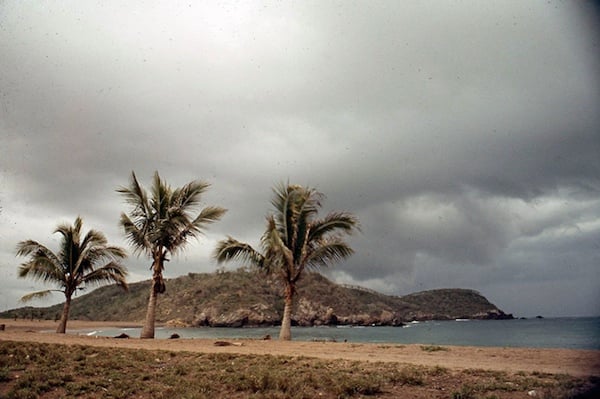
Courtesy the artist, Dia Art Foundation.
Screenshot of Iñaki Bonillas, Words and Photos (2014).
Courtesy the artist, Dia Art Foundation.
In the 1970s my parents sometimes held slideshow parties so they could show their friends pictures from their vacations, holidays and parties. It was a pretty good way to get people up to date on what they were doing, and since my mother was a capable and self-motivated photographer, the family always had a lot of slides to show.
Now we have Facebook, iPhoto slideshows, and Flickr for these things, but what gets done with our family photo archives is a bit more nebulous. Facebook isn’t crawling with images of grandpa when he was young, and probably never will be, #ThrowbackThursdays notwithstanding.
Enter Mexican artist Iñaki Bonillas’s Dia Art Foundation commission Words and Photos (2014), released to the public last Friday. The piece, the latest of Dia’s ongoing web art series, takes the form of an underwhelming website that encourages people to page through 400 digitized images from the archive of Bonillas’s grandfather, J. R. Plaza, by way of a word association guessing game.
Screenshot of Iñaki Bonillas, Words and Photos (2014).
Courtesy the artist, Dia Art Foundation.
Each photograph in the piece is tagged with words that describe the image. The website consists of a search field and a list of accepted and failed tag searches. So far, words including “poop,” “taco,” “fuck,” and “cake” have yielded no results. Functioning tags including “boring,” “sad,” and “fart.” Each tag cues up a selection of mediocre photographs—most in black-and-white or sepia—of private significance to Bonillas and his family; portraits, cars, vacation shots, and so on.
Unsurprisingly, digging through the site’s actual tags yields little of note. Clicking the “discovery” tag brings up three photographs, as indicated by a number displayed below the images. The number of tags associated with each image is located below the search query. We see a man peering through curtains (229 associated tags), a kiss (220 associated tags), and a dilapidated building (398 associated tags). Page through the tags associated with the dilapidated building and you see “weak” (no other associated images), “mud” (a family near the river with one family member’s head blackened, and a car in the mud), and so forth. The whole exercise is tedious.
For me, it was also exasperating. Only after spending half the day on the site, did I realize that there was any concept at all; the tag counter wasn’t visible because the website doesn’t automatically scale to browser size. In short, the whole point of the website was lost below the fold, a basic design issue that Iván Abreu and the design studio Taller de Comunicación Gráfica should have considered.
Screenshot of Iñaki Bonillas, Words and Photos (2014).
Courtesy the artist, Dia Art Foundation.
None of this bodes well for the project, though I might have been able to overlook some of the design shortcomings if they were backed up by a solid concept. There is none of that. The blurred authorship between the artist and his grandfather is the only identifiable “art” concept here and it adds nothing more than a few familiar tropes about authenticity and originality to the project. In fact, looking at this project through an art frame only diminishes the website, as I ended up begrudging the artist for using art’s aura as a means of keeping me on the site. I wouldn’t have kept looking for something special, if the site’s label as “art” hadn’t told me I should expect it.
Which brings me back to the slideshow parties, which, in light of all this, still seem like the preferable way to experience a family archive. I didn’t know Bonillas’ grandfather and a thousand tags aren’t going to get me any closer. I imagine, though, that I would have found the more intimate and charming moments in these photos if they’d been accompanied by the thousands of words that get exchanged at a slideshow party.
Iñaki Bonillass’ Words and Photos (2014) can be accessed here.